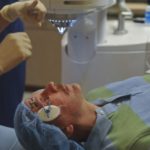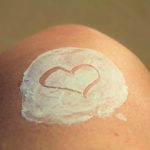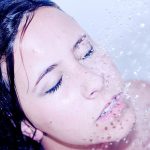Stretch marks are an unfortunate part of life and they can happen to both men and women. Of course, women are more prone to getting them. In addition, various factors can affect how the marks appear on your skin and their visibility. Like for instance, genetic propensity that is responsible for the elasticity of your skin, your race, and age. Before talking about removing stretch marks, it’s advisable to understand how they form. Avoiding the main reasons why your skin develops those unsightly lines is preferable to looking for remedies to get rid of them later.
Understanding Stretch Marks
Stretch marks are also called striae. And, as the National Health Service explains, if you get them during pregnancy, they’re called striae gravidarum. When these marks first start to form, you’ll notice red or purple streaks appearing that are usually itchy. Over time, they may gain a silvery or translucent color and seem less visible. However, these lines have a different texture from the surrounding skin and if your skin coloring is darker, they may remain visible for a longer while. For this reason, removing stretch marks can become a bit more difficult.
The most common locations for striae are the thighs, buttocks, breasts, flanks, hips, upper arms, shoulders (particularly in the case of weight lifters building mass), and of course, abdomen during pregnancy. Some striae can also be caused because of a medical condition called Marfan Syndrome and Cushing’s Syndrome that can appear on the face. Hormones are yet another reason why your skin becomes more susceptible to developing stretch marks.
Why Stretch Marks Form
Your skin is made up of 3 layers, the epidermis, dermis, and hypodermis. The outermost layer is the epidermis that gives your skin its color and keeps your body protected. Below that is the dermis that has sweat glands, hair follicles, and connecting tissue. This layer is made of collagen fibers along with elements like fibroblasts, fibronectin, and fibrillin. The subcutaneous layer or the hypodermis has more connecting tissue and is composed of fat cells.
When the tissues under the skin grow quickly like during puberty, pregnancy, or sudden weight gain, the epidermis and dermis may not be able to keep up and lose their elasticity. This factor leads to the breaking of the collagen fibers resulting in the underlying layers becoming visible. That’s the reason why you’ll need to look for solutions for removing stretch marks.
The Best Option for Removing Stretch Marks – Prevent Them
As mentioned above, prevention is always better than cure. During pregnancy or puberty, your best bet is to keep the skin hydrated so that it maintains its elasticity. Consider applications like vitamin A and E oils, coconut oil, olive oil, hyaluronic acid, and aloe vera gel. These oils and applications can nourish your skin and are not likely to cause harm to the baby even if they seep into your bloodstream. Teenagers can also use these oils and taking the vitamins orally can help hydrate the skin from within. Further, if you’re gaining weight because of a medical condition, begin applying the oils to avoid the marks that may appear once you get back in shape.
Consider Natural Methods for Repairing Your Skin
To begin with, it is important to understand that any methods you adopt for removing stretch marks can only lighten them so that they’re barely visible. Once the skin incurs that kind of damage, you cannot erase the marks completely. As your dermatologist will explain, the best solutions to help you that are available today, work to gently scrape off the top layers of the skin surrounding the striae so that the entire area gains a more even tone and appearance. Here are some of the options you can try.
- Sugar or sea salt mixed with almond oil or coconut oil along with a few drops of lemon juice makes an excellent scrub for stretch marks. Create a mixture that resembles wet sand and gently massage it on the striae for 8 to 10 minutes. Try this several times a week and you may be able to see great results.
- Microdermabrasion is another technique that works by spraying the skin surface with minute crystals to dislodge the dead surface cells. A vacuum is then used to clear away the crystals. In this way, the technique effectively polishes the skin for removing stretch marks.
- Platelet Rich Plasma (PRP) therapy is a very innovative method that uses the body’s natural healing abilities to erase the marks. Doctors harvest around 10 ml of your blood from the forearm and use it to create a special serum. Next, they inject this serum into the areas in and around the striae. The PRP serum contains tissue building elements that can stimulate the growth of new collagen with the fibroblasts and fibronectin they contain. You should be able to see results of the PRP treatment in a period of 4 to 6 weeks and can be done at clinics like Melbourne Hair and Skin clinic.
- Laser therapy uses light at specific wavelengths to target the blood vessels under the marks. As the light works on the skin, the vessels absorb the energy from the lasers and collapse. As a result, the marks become less visible. The number of sessions you’ll need depend on the type of skin you have and its coloring. Laser therapy is also called pulsed dye laser therapy and there are a number of variations available today. Red light therapy is good for stretch marks and can help normalize skin appearance.
- High-frequency ultrasound waves given by way of the Ultherapy technique are yet another option that work to stimulate the production of collagen under the skin and help in removing stretch marks.
Stretch marks or striae are not a harmful condition. But, if they cause you psychological distress and start to affect your quality of life, you can consider having them removed. Try some of the methods mentioned above and you may be able to see visible results soon.
Related Posts














